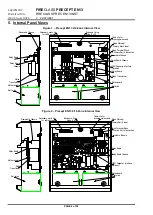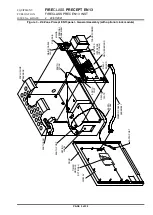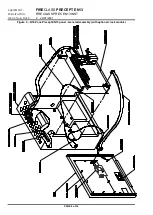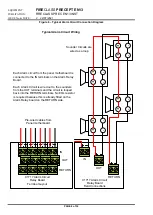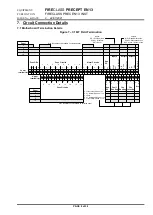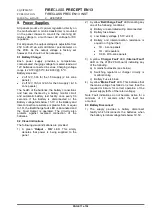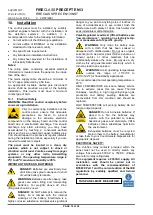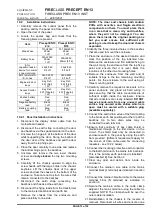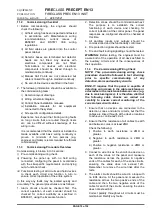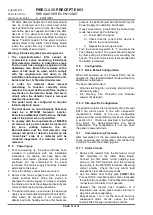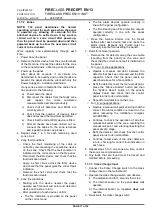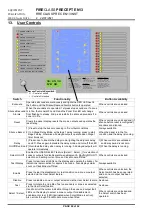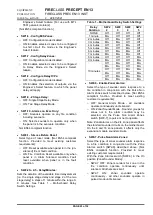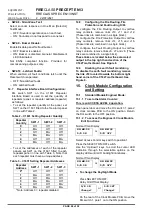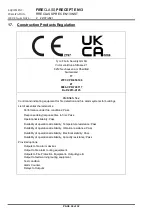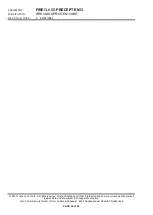
EQUIPMENT:
FIRE
CLASS
PRECEPT EN13
PUBLICATION:
FIRECLASS PREC EN13 INST
ISSUE No. & DATE:
2 22/07/2021
PAGE 18 of 32
11.7.4 Fire and Fault Routing Outputs
1. Remove the resistor from the Fire Routing
output circuit terminals and connect the field
wiring to the terminals, observing correct
polarity. Check that any fault indications clear
after a few seconds.
2. To operate the output, initiate a fire condition on
a zone. Check that the fire signal is received at
the receiving station. Silence and reset the fire
alarm panel to clear the output.
3. Remove the resistor from the Fault Routing
output circuit terminals and connect the field
wiring to the terminals, observing correct
polarity. Check that any fault indications clear
after a few seconds.
4. Initiate a fault condition on the fire alarm panel to
signal a fault to the remote receiving station.
5. Confirm the receipt of the fault warning at the
receiving station.
6. Open-circuit the output wiring of each circuit in
turn, Confirm the fire alarm panel indicates Fire
Routing and Fault Routing faults appropriately.
7. Reconnect the cabling and confirm the faults
clear.
11.7.5 Fire Protection control signal
1. Ensure any fire protection equipment to be
controlled via the Fire Protection output is locked
off/safe before attempting any connection,
testing or commissioning.
2. Remove the resistor from the Fire Protection
output circuit terminal and connect the field
wiring to the terminals, observing correct
polarity. Check that any fault indications clear
after a few seconds.
3. Initiate a fire condition on a zone to operate the
output. Check that the fire signal operates the
interface relay adjacent the fire protection
equipment.
4. Open-circuit the field wiring and confirm that the
fire alarm panel indicates Fire Protection output
fault.
5. Reconnect the cabling and confirm the faults
clear.
6. Final testing and commissioning of the loop
through to the fire protection equipment,
including test [simulated] activation of the
equipment, should be carried out at the
appropriate time in conjunction with the engineer
responsible for the fire protection system.
11.7.6 Ancillary inputs
Remote Silence Alarms, Reset and Evacuate inputs
should each be tested by the activation of the
remote equipment. The response should be verified
for each signal.
11.7.7 Ancillary outputs
The correct operation of equipment connected to
the Zone Outputs, Disablement Active, Evacuate
Active and Buzzer Active outputs should be verified
in turn by initiating a fire condition on each of the
appropriate zones; disabling/enabling a zone;
operating the Evacuate button on the panel’s
display.
11.7.8 Repeaters
1. Power-up the Panel and then the Repeaters.
Only the “Power Supply On” LEDs should be
illuminated on the Panel and Repeaters.
2. At Repeater 1, turn the Access control switch to
“1”, and press the “Evacuate” button. Check that
the alarms operate and the internal buzzer
operates on all repeaters.
3. Press the “Silence” button on the fire alarm
panel. Check that the alarm circuits silence and
the internal buzzer silences on all repeaters.
4. Repeat steps 2 and 3 for each repeater.
5. Operate a Manual Call Point on zone 1 and
check for correct fire indication at each repeater.
6. Press the “Silence Alarms” button on a repeater
and check that the alarms are silenced and the
Zone 1 fire LED is constantly illuminated on all
repeater panels.
7. Press the “Reset” button on a repeater and
check that the panel and repeaters return to the
quiescent state.
8. Repeat steps 5 to 7 for each zone and ensure
“Silence Alarms” and “Reset” operate correctly
from each repeater.
9. Set the DIL switches on the C1631 Repeater
Interface card in the fire alarm panel OFF (No
Repeaters). Check that all repeaters indicate a
“Comms. Fault”.
10. Set the C1631 Repeater Interface card DIL
switches in the fire alarm panel back to their
previous settings and check that the repeaters
return to normal.
11. Set the first repeater address to 0. Check that
the panel indicates a “Repeater fault” and any
additional repeaters display a steady “Comms
fault” LED.
12. Set the first repeater address back to normal
and check that the panel and repeaters return to
normal.
13. Repeat steps 11 and 12 for any other connected
repeaters.

